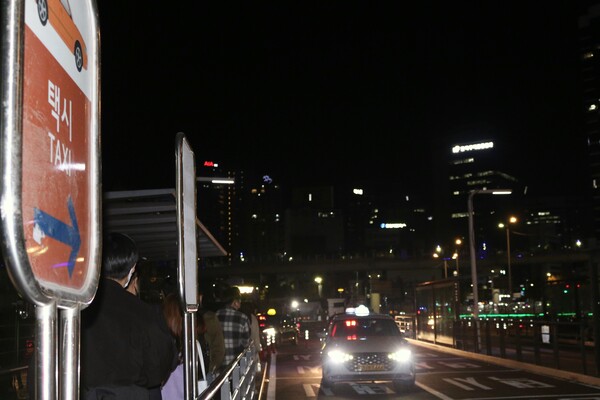
Warning signs have been lit for many heading home. Seoul Station after midnight has been crowded with people sticking their necks out, searching for red “empty” signs on taxis. Situations have also been same during the daytime. As regulations related to COVID-19 are being relaxed, an increase in outside activities has led to a rise in taxi demand. Citizens are certainly suffering because of the lack of taxi supply, no matter what time of the day it is. What are the fundamental reasons for the Korean taxi industry being at serious risk?
Korean taxis are divided into corporate taxis and private taxis, and three out of ten are corporate taxis belonging to specific companies. According to the Korea National Joint Conference of Taxi Association, however, the number of corporate taxi drivers decreased from 102,320 at the end of December 2019, to 74,536 at the end of May 2022. This is a decrease of 27,784 in two years and five months, which is a decline of more than approximately 27 percent compared to the previous ratio. The operation rate of corporate taxis, which was recorded at 50 percent before COVID-19, has recently fallen to about 30 percent. As a result, there is a serious imbalance in supply and demand of taxi services not only late at night and early in the morning but also during rush hours.
There are two main reasons for the taxi industry crisis. First, COVID-19 caused many drivers to move to another industry, such as delivery service, and it has been difficult to find alternative solutions. In other words, the number of taxi drivers has decreased, but it is difficult to find alternative human resources. Such phenomenon is related to their working conditions. Corporate drivers usually work more than ten hours a day, but they do not receive their overtime wages. This is because the recognized working hours of taxi drivers are already fixed after the agreement between the taxi labor union and the company they contracted. The second issue comes with the aging of the remaining drivers. In the case of private taxis, seven out of ten elderly drivers are in their 60s or older, and many drivers aged more than 65 are reluctant to drive late at night due to their poor eyesight and physical strength.
The Ministry of Land, Infrastructure, and Transport has come up with four measures. First, expand the supply of late-night taxis through drastic regulatory reform. Second, improve taxi operation patterns and develop new mobility. Third, minimize inconvenience to citizens by expanding the supply of late-night public transportation. Fourth, diversify the late-night taxi services in response to demand and supply. Among them, as the contents are relatively specific and applied immediately, attention is being paid to the first measure including the compulsory holiday system, and the fourth measure focusing on raising late-night taxi call fees. However, experts say that it is hard to solve the problem fundamentally because they are only short-term solutions. As the taxi industry fluctuates due to the unprecedented crisis, essential actions should be taken. The inconvenience from taxi supply shortages and poor working conditions for taxi drivers is hitting citizens hard.

